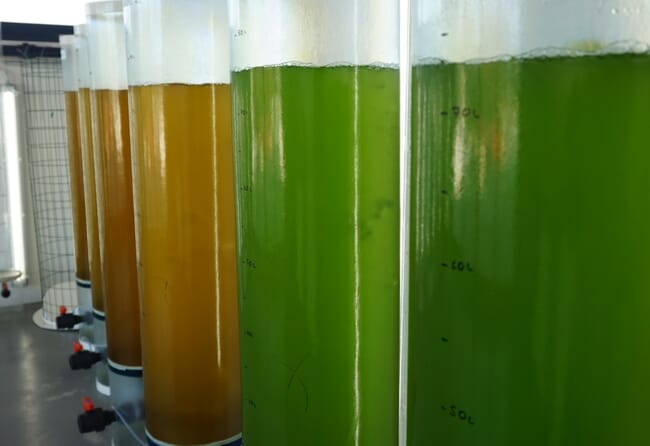
© Algared
Researchers with Texas A&M AgriLife Research say that the algae-based biofuel can be used as an alternative to jet fuel and can serve other transportation needs.
“The commercialisation of algal biofuel has been hindered by the relatively low yield and high harvesting cost,” said Joshua Yuan, PhD said. “The limited light penetration and poor cultivation dynamics both contributed to the low yield.”
Yuan, who works as an AgriLife Research scientist, professor and chair of Synthetic Biology and Renewable Products at Texas A&M says that overcoming these challenges could unlock the potential of viable algal biofuels. This could help reduce carbon emissions, mitigate climate change, alleviate petroleum dependency and transform the bioeconomy.
Yuan used a patented artificial intelligence advanced learning model to predict algae light penetration, growth and optimal density. The prediction model allows for continual harvest of synthetic algae using hydroponics to maintain the rapid growth at the optimal density to allow best light availability.
The method Yuan and team have successfully achieved in an outdoor experiment is 43.3 grams per square metre per day of biomass productivity – a world record. The latest Department of Energy target range is 25 grams per square metre per day.
“Algae can be used as an alternative energy source for many industries, including biofuel and as jet fuel,” Yuan said. “Algae is a good alternative fuel source for this industry. It’s an alternate feedstock for bioethanol refinery without the need for pre-treatment. It’s lower cost than coal or natural gas. It also provides for a more efficient way of carbon capture and utilisation.”
Yuan said algae can also be used as a source for fish and livestock feed.
The team’s findings were published in January in Nature Communications. Ongoing research is funded by the US Department of Energy Fossil Energy Office. The work is also being funded by a gift from Dr John ’90 and Sally ’92 Hood, who recently met with Yuan to discuss his biofuels research program. The gift is managed by the Texas A&M Foundation.
Algae as a renewable energy
Algae biofuel is regarded as one of the ultimate solutions for renewable energy, but its commercialisation is hindered by growth limitations caused by mutual shading and high harvest costs.

“We overcame these challenges by advancing machine learning to inform the design of a semi-continuous algal cultivation (SAC) to sustain optimal cell growth and minimise mutual shading,” he said.
Scaling-up the SAC with an outdoor pond system achieves a biomass yield of 43.3 grams per square meter per day, bringing the minimum biomass selling price down to approximately $281 per tonne, according to the journal article. In comparison, the standard low-cost feedstock for biomass in ethanol is corn, which is currently approximately $6 per bushel or $260 per tonne. However, Yuan’s process does not call for costly pre-treatment before fermentation. To compare, corn must be ground and the mash must be cooked before fermentation.
“Algae as a renewable fuel source was a hot topic a decade ago,” said Dr Bart Fischer, co-director of the Texas A&M Agricultural and Food Policy Center. “As a result, there’s a lot of skepticism. I was even skeptical. However, the work that Joshua is doing is incredibly innovative. We were excited to partner on this project. At the productivity levels they obtain – and given the low-cost harvest that the strain allows – it shows a lot of promise.”
Yuan said despite significant potential and extensive efforts, the commercialisation of algal biofuel has been hindered by limited sunlight penetration, poor cultivation dynamics, relatively low yield, and the absence of cost-effective industrial harvest methods.
“This technology is proven to be affordable and help propel algae as a true alternative form of energy,” he said.




